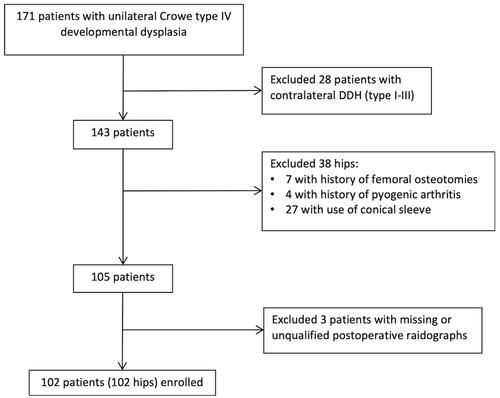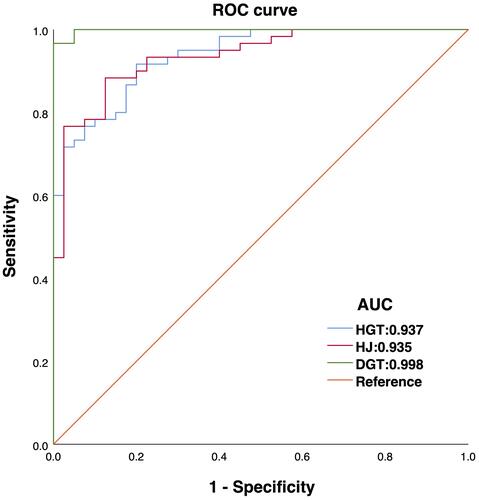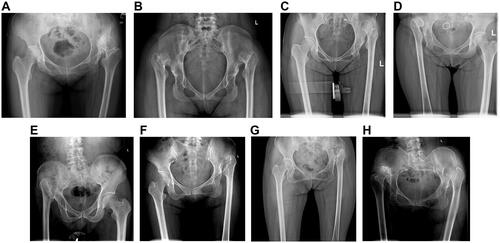Figures & data
Figure 2 The measurement methods of dislocation height and distalization of greater trochanter. The dislocation height was presented as two indicators, which were perpendicular distances from the femoral head/neck junction and the tip of greater trochanter to the inter-teardrop line. The distalization of the greater trochanter was calculated by differences between the pre- and post-operative height of the greater trochanter.

Table 1 Patient Demographics of the STO and Non-STO Groups
Figure 3 X-ray of a 42-year-old woman undergoing THA with subtrochanteric osteotomy. (A) Pre-operative X-ray. (B) Post-operative X-ray.
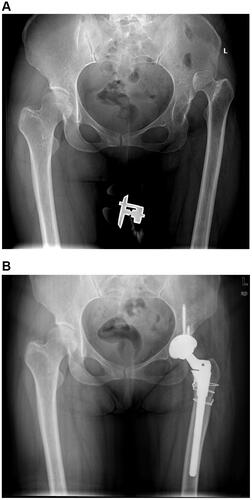
Figure 4 X-ray of a 24-year-old woman undergoing THA without subtrochanteric osteotomy. (A) Pre-operative X-ray. (B) Post-operative X-ray.
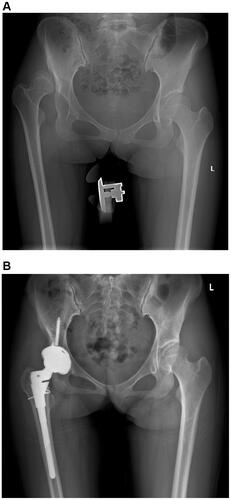
Table 2 Reliability of Length Measurements
Table 3 The Predictive Values for Three Indicators

